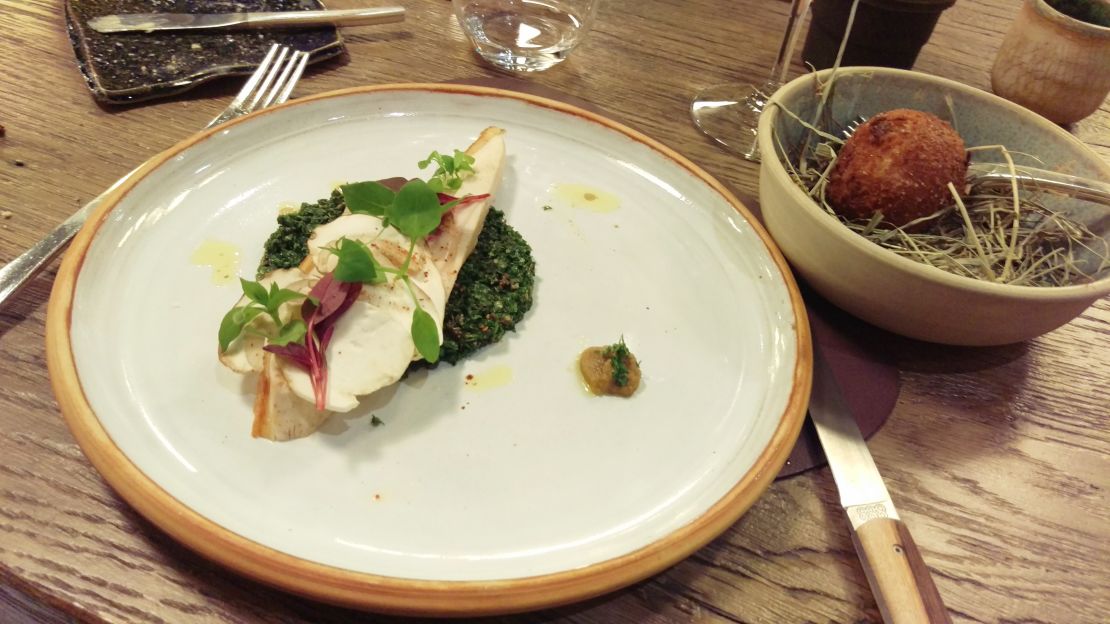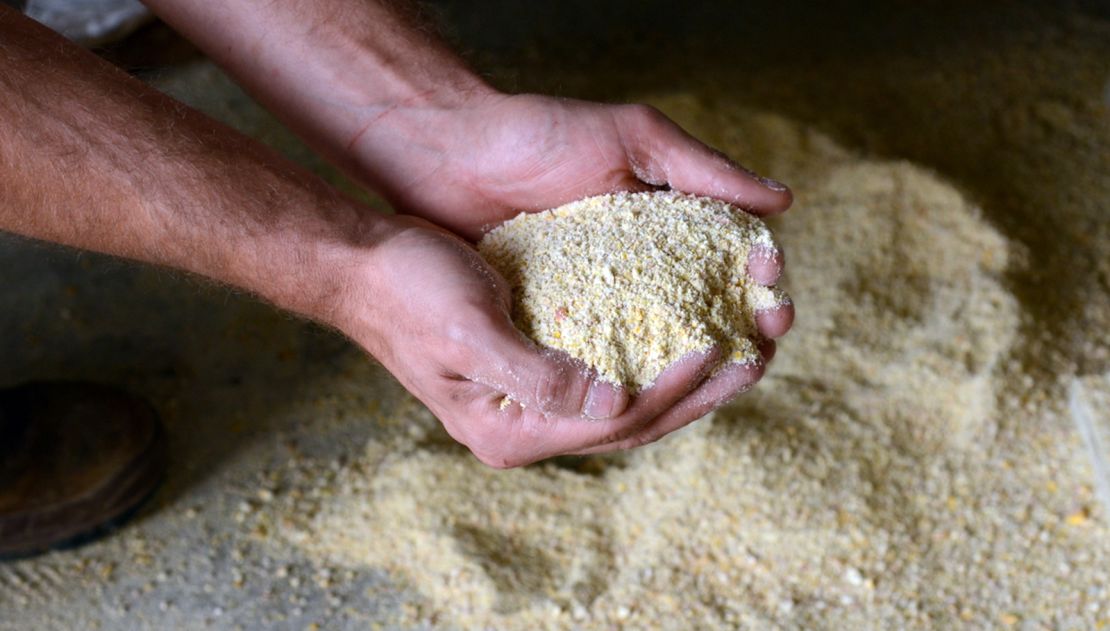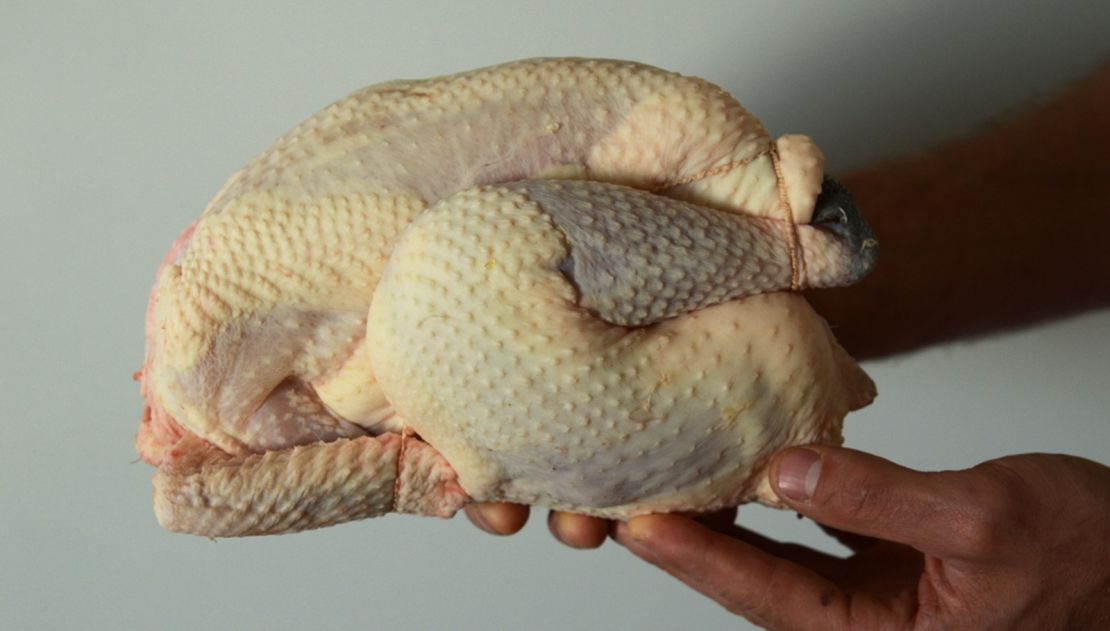A tiny town in eastern France may seem a long way to travel for a plate of chicken, but it’s worth it.
I’ve come to the Michelin-starred Aux Terrasses in Tournus to taste one dish in particular – roasted chicken breast strips with a tabbuleh malted barley garnish and an onion stuffed with mushroom sauce.
The breast is on the large side, its juicy flavor a million miles away from supermarket blandness. The white meat is soft but firm, under a thin, brown-seared skin that lacks excessive fat.
As for the gravy pot, I’m tempted to drink it on its own.
My taste buds are exploding – and they should be. Because I’m eating volaille de Bresse, the most expensive chicken in the world, commanding a cool €40 per kilogram ($48) in the butcher shops of Paris.
High quality

Chef Jean-Michel Carrette took over his father’s business in 2005 and has kept Aux Terrasses’ Michelin star in tact with an imaginative and bold menu.
“I like to use Bresse chicken and I’m in luck because the quality of the local produce is the highest the world,” he says.
Bresse chicken is the favorite of Michelin chefs, as well as French Presidents. François Hollande would have nothing else served at his table and Emmanuel Macron is also said to be an ardent fan.
The chickens are raised in the historic region of Bresse, a former French province. As France only exports 5% of its production, you’ll likely have to travel here to savor its taste.
The next day Marie-Paule Meunier, from the Committee of Promotion of the Bresse Poultry offers a history lesson in the charming market town of Louhans, considered the capital of Bresse chicken, as we eat in an expressly certified brasserie.
The original corn-fed chicken

“Unlike many foods and recipes that are lost in the mists of time, the history of the Bresse chicken can be traced easily through an abundance of documents detailing how the farmers paid their rent in chickens and how they gifted them to invading armies,” she says.
“The first mention is registered in 1591 and tells us how the citizens of Bourg-en-Bresse offered two dozen birds to the Marquis de Treffort for having routed the troops of Savoy.”
“In this region, between the rivers Doubs and Saone and below the Jura mountains, the cultivation of maize started soon after its arrival from the New World.”
Volaille de Bressem it seems, is the original corn-fed chicken.
Its fame spread in the 19th century aided by the fact that the breed of white chickens (the Bresse de Bény variety) it is produced from matches the colors of the French flag – blue legs, white body and red comb.
The ultimate accolade came 60 years ago, when the Bresse chicken became the first live foodstuff to obtain a protected designation of origin certification (AOC) now valid across the European Union, something usually granted to items like Champagne, Parma ham or Stilton cheese.
Raising Bresse

There are around 180 farms rearing Bresse chickens in a legally defined area of Bresse.
The Laurency family farm, which lies seven kilometers from Louhans, raises 20,000 Bresse chickens a year.
“Not only must a certificated chicken be reared in Bresse, but also only eat food grown in the region,” says Anthony, the youngest farm hand while pointing out the chickens foraging freely in the fields; by law they must have 10 meters of area each.
He shows me the feed they have just mixed: “700 kilograms of our own corn to 300 kilograms wheat grain, topped by 7% desiccated milk.
“The feed is intentionally poor in protein so that the birds must forage for insects, worms or snails as well as grass to supplement their diet.”
Their muscle must be turned into fat before they reach our tables, so they’re rested in wooden cages called “épinettes” in rooms with low diffuse light while they eat, dream and chill out.
The farm buys chicks from a centralized selection center that guarantees the purity of the breed – which was nearly extinguished in the flames of World War II.
Chicks arrive when they are just a day old and cost $2.40 each, unlike other breeds you can buy for just 35 cents a piece.
Most Bresse chickens are slaughtered by the time they are four months old, while the larger “poulardes” – females on the verge of ovulating – are allowed to live one month longer.
The biggest and most precious of them all is the capon, a castrated rooster that must “go through all seasons.”
Chicks who are to be raised as capons usually arrive in February. They’re then castrated in April and slaughtered in time for Christmas.
Top poultry rearer

December is the time of the region’s major agricultural fete dating from 1862, the Glorieuses de Bresse.
This is a series of four one-day events in four different market towns, with prizes for the top chicken farmers.
In a profession that’s traditionally female orientated – men used to toil the fields while women reared the chickens – breeder Rachel Roussel-Voisard is a trailblazer.
On December 15, 2007 she became the first woman to receive the top poultry rearing prize, a blue Sevres vase in the Glorieuses at Louhans.
In her farm, outside the village of Chapelle-Voland at the feet of the Jura mountains, everyone works for the chickens.
Roussel-Voisard grows her own maize and has a flock of Charollais sheep keep the grass trim like a golf cours. The neighbor’s cows provide milk and Cassis the cat hunts mice to keep the coops free of vermin.
I watch as she performs a “roulage,” one of the region’s traditions.
She takes a recently slaughtered, plucked capon and wraps a white linen cloth around it.
With a trussing needle and string, she sews what can only be described as a legless diaper with only the neck sticking out.
She keeps on stitching without piercing the skin, pulling very tightly and pushing out the air.
This is an ancient preservation technique; as the dead bird is in no direct contact with air, it can keep for up to three weeks in a cold store.
The tight wrap also helps distribute the fat evenly, however Roussel-Voisard thinks there’s more to it.
“It’s not just for conservation, aesthetics and taste, but it’s also a mark of respect for the animal itself,” she says.
“Secret” Bresse recipe
•Managed to get your hands on a Bresse chicken? Michelin chef Jean-Michel Carrette shares one of his secret recipes:
Bresse Chicken with Morel Mushrooms and Jura Vin Jaune “Like My Father Used to Cook It”
Ingredients / Four people
1 chicken 1.6kg/3lbs 8oz, gutted and cut in quarters
1 onion
50cl/17 fl oz of white wine
1.8 It/1.5 quarts chicken stock
1 bouquet garni
150 ml/5 fl oz of single cream
1 bottle of Jura Vin Jaune (use dry white sherry if not available)
1 tablespoon flour
100g/3.5oz dehydrated morel mushrooms
Mustard leaves
1 radish
A few edible marigold petals
1 sheet of gelatine
1 cc/0.03 fl oz of cider vinegar
Assortment of seasonal vegetables
Preparation
The Mushrooms
Rehydrate the morel mushrooms overnight in water and wash several times with clear water to remove any sand. Poach four minutes in salt water, set aside.
The Chicken
Dice the onion finely and sweat.
Flour the chicken quarters and brown with the onions.
Add bouquet garni, deglaze with white wine and reduce.
Add the stock and the rest of the ingredients and simmer for 1hr 15min.
Decant the chicken quarters and allow the broth to reduce.
Add the cream, season to taste and pour three large spoonfuls of Vin Jaune.
Add the morels and chicken back into the sauce.
The Vegetables
Peel and cook each type of vegetable independently “al dente” in salted water.
Before serving, warm up in a frying pan with some chicken stock and a little butter and season in a similar way.
Presentation
Arrange the vegetables harmoniously on the plates. Place the chicken cooking pot on the table. Serve the morel sauce generously.
Tip: Pick a good bottle of wine for the sauce, and drink the rest with the dish.
John Malathronas is a London-based travel writer and photographer. He’s written or co-written 15 books, including the “Rough Guide to France.”
















